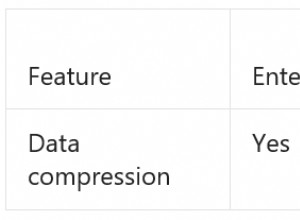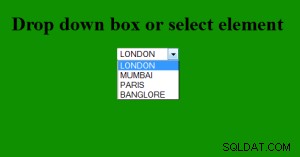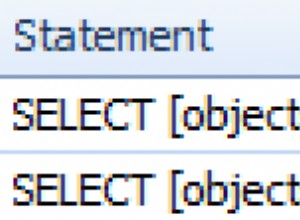Io farei questo:
string connStr = "Server=localhost;Port=5432;User Id=postgres;Password=enter;";
var m_conn = new NpgsqlConnection(connStr);
var m_createdb_cmd = new NpgsqlCommand(@"
CREATE DATABASE IF NOT EXISTS testDb
WITH OWNER = postgres
ENCODING = 'UTF8'
CONNECTION LIMIT = -1;
", m_conn);
m_conn.Open();
m_createdb_cmd.ExecuteNonQuery();
m_conn.Close();
connStr = "Server=localhost;Port=5432;User Id=postgres;Password=enter;Database=testDb";
m_conn = new NpgsqlConnection(connStr);
m_createtbl_cmd = new NpgsqlCommand(
"CREATE TABLE table1(ID CHAR(256) CONSTRAINT id PRIMARY KEY, Title CHAR)"
, m_conn);
m_conn.Open();
m_createtbl_cmd.ExecuteNonQuery();
m_conn.Close();
L'uso di var qui non è raccomandato. L'ho usato perché non so quali sono i tipi restituiti ma dovresti.
Notare l'uso di una stringa grezza (@ ). Semplifica la creazione di stringhe.
Non utilizzare identificatori racchiusi tra virgolette in Postgresql a meno che l'identificatore non sia altrimenti illegale. Ti renderà la vita molto più difficile.




